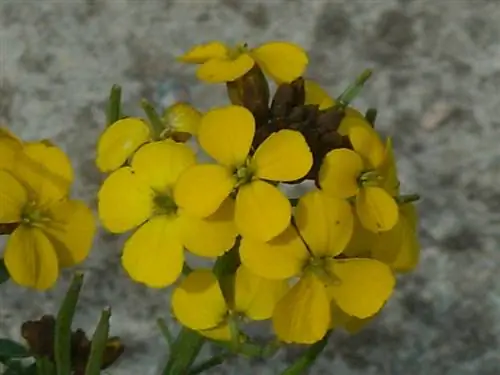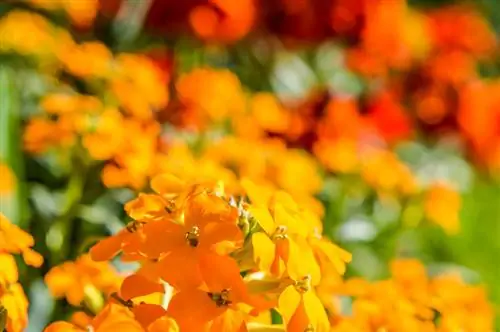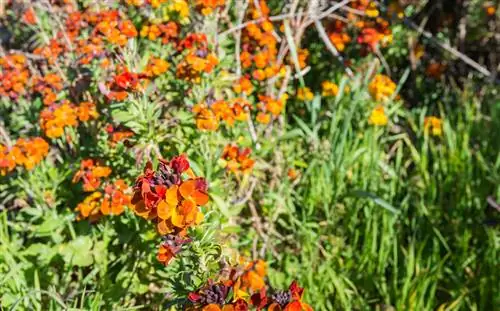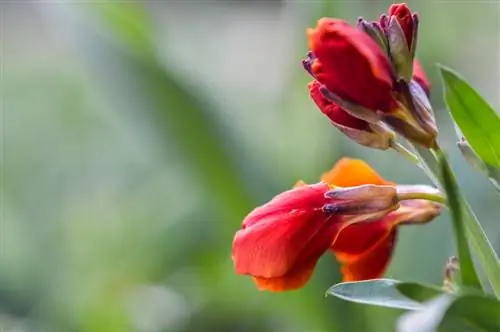- Author admin [email protected].
- Public 2023-12-16 16:46.
- Last modified 2025-01-23 11:20.
Although not well known as an ornamental plant these days, it is popular with those who know it. The gold lacquer presents not only beautiful but also fragrant flowers. With them he creates colorful accents in the perennial bed or spring flower bed. But how frost-tolerant is it actually?
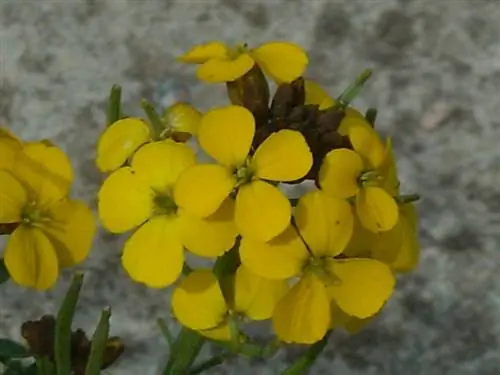
Is gold lacquer hardy or does it need protection in winter?
Is gold lacquer hardy? Gold lacquer is only partially hardy in our latitudes. While its perennial varieties can overwinter well outdoors with protection made of brushwood, leaves or compost, pot cultures should be kept frost-free indoors or in a cold house.
Conditionally hardy and yet perennial
In this country, gold lacquer is only partially hardy. If you've sown it outside and enjoyed its flowers, but it's forgotten by fall, it probably won't survive the winter. Without protection, the gold lacquer usually freezes.
However, if you protect it, you can call the gold lacquer your own for many years without having to reseed or otherwise propagate it every year. There are biennial and perennial varieties on the market.
You have to wait two years
If you sow the gold lacquer and want to admire its flowers, you have to bring it through the winter at least once. The reason: This perennial only produces a rosette of leaves in the first year. They only bloom in the second year.
Which specimens are particularly at risk?
Some specimens are more sensitive to frost than others. Here is a list of those that you should better protect in winter:
- freshly propagated specimens
- specimens planted in autumn
- Varieties with double flowers
- Specimens that are in rough locations
When grown in pots: overwinter indoors without frost
Gold lacquer in the pot should definitely be overwintered frost-free if you don't want to say goodbye to it. Otherwise its root ball will freeze in the pot and it will die. For example, you can overwinter the plant in a cold frame or cold house. It is important that it is frost-free, bright and cold.
For outdoor cultivation: cover
Gold lacquer plants that have been planted in beds or elsewhere outdoors should be protected over the winter not only from severe frost in the root area, but also from frost and winter sun. This is important to note
- cut back to the ground in autumn
- cover with brushwood from the end of October
- if applicable Additionally mulch with leaves or compost
- do not fertilize
Tip
Varieties with double flowers should always only be planted in pots or containers and then overwintered indoors frost-free!

